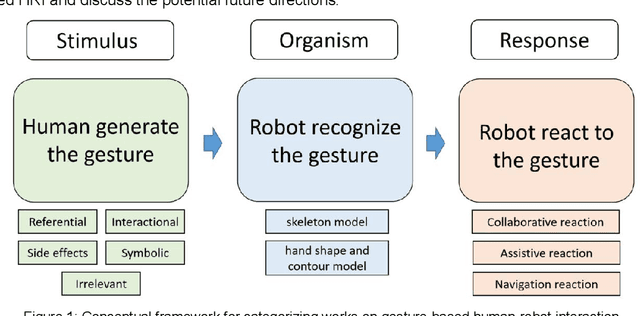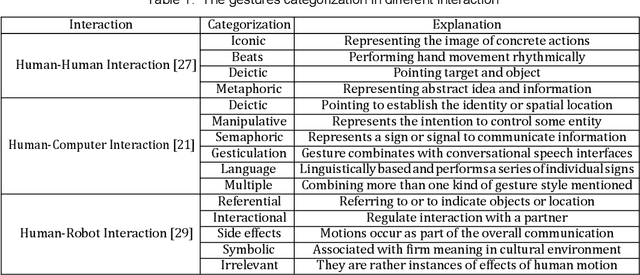Hand and Arm Gesture-based Human-Robot Interaction: A Review
Paper and Code
Sep 17, 2022


The study of Human-Robot Interaction (HRI) aims to create close and friendly communication between humans and robots. In the human-center HRI, an essential aspect of implementing a successful and effective HRI is building a natural and intuitive interaction, including verbal and nonverbal. As a prevalent nonverbally communication approach, hand and arm gesture communication happen ubiquitously in our daily life. A considerable amount of work on gesture-based HRI is scattered in various research domains. However, a systematic understanding of the works on gesture-based HRI is still lacking. This paper intends to provide a comprehensive review of gesture-based HRI and focus on the advanced finding in this area. Following the stimulus-organism-response framework, this review consists of: (i) Generation of human gesture(stimulus). (ii) Robot recognition of human gesture(organism). (iii) Robot reaction to human gesture(response). Besides, this review summarizes the research status of each element in the framework and analyze the advantages and disadvantages of related works. Toward the last part, this paper discusses the current research challenges on gesture-based HRI and provides possible future directions.
 Add to Chrome
Add to Chrome Add to Firefox
Add to Firefox Add to Edge
Add to Edge